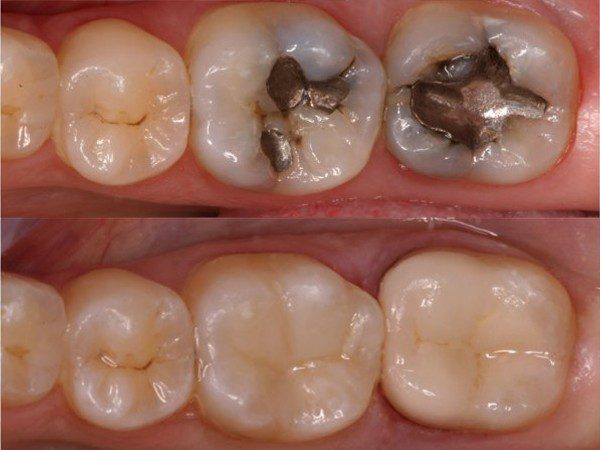Restorative Treatment /Tooth Filling
Restorative treatment, also known as dental restoration, encompasses procedures aimed at repairing and rejuvenating teeth that have been damaged or affected by decay, restoring them to their natural function and aesthetic. A frequently performed restorative treatment is tooth filling.
Comprehensive Guide to Restorative Tooth Filling
Tooth filling is a pivotal aspect of restorative dental treatment, primarily employed to address cavities resulting from tooth decay. These fillings serve to reinstate the tooth’s structural integrity and function once the affected or decayed portion is meticulously removed. Here’s a breakdown of this dental procedure:

Materials Used:
- Amalgam Fillings: These are silver-hued fillings comprising a blend of metals, predominantly mercury, silver, tin, and copper.
- Composite Fillings: These tooth-colored fillings are crafted from resin material, renowned for their aesthetically pleasing qualities as they seamlessly match the natural tooth color.
- Gold Fillings: While durable and long-lasting, gold fillings are less common due to their distinctive appearance.
Procedure:
- The dental professional initiates the process by administering a local anesthetic to numb the area surrounding the affected tooth, ensuring a pain-free experience.
- Utilizing dental instruments or laser technology, the decayed or damaged section of the tooth is carefully removed.
- The prepared cavity is subjected to thorough cleaning and disinfection to create an ideal foundation for the filling.
- The chosen filling material is meticulously layered and shaped to replicate the natural tooth’s anatomy.
- For composite fillings, a specialized curing light is applied to harden the material.
- The filling undergoes a polishing stage, guaranteeing a smooth texture and a naturally blended appearance.
Benefits:
- Restoration of the tooth’s strength and structural integrity.
- Prevention of further decay by sealing off the affected region.
- Enhanced aesthetics for composite fillings as they seamlessly blend with the natural tooth color.
- Alleviation of tooth sensitivity and discomfort attributed to cavities.

